In advance of the Group of Seven (G-7) summit in Hiroshima, Japan on May 19-21, 2023, Foreign Policy at Brookings invited scholars to weigh in on the forum, the challenges it faces, and how it can be successful. Read their responses below:
 Pavel K. Baev
Pavel K. Baev
Nonresident Senior Fellow, Center on the United States and Europe
The re-energized West is a relatively new phenomenon in the international arena, and many stakeholders, particularly in the Global South, have doubts about its longevity. This remarkable unity has emerged as a response to Russia’s aggression against Ukraine in February 2022, and a major task of the G-7 summit in Hiroshima is to sustain this drive. The nearly 15-month-long war is in a precarious phase. The deadlock that has lasted for a half-year could turn into a sequence of Ukrainian advances, at the same time as the leaders of the Western coalition and invited guests engage in deliberations on consolidating their success. As Russia reels from a series of new battlefield defeats, the now familiar task of expanding the sanctions regime might become less demanding, except for plugging the inevitable holes in the multiple restrictions on trade and investment. This turn in the tide of war will, however, bring new risks shaped by capricious rather than calculated (and possibly even desperate) moves by the Kremlin. So, the G-7 needs to consider the preemption of these risks and not just resilience.
The meeting in Hiroshima also involves the task of demonstrating that Western solidarity is not narrowly focused on helping Ukraine to win the war, but has a wider agenda of stabilizing the world order. Resisting China’s propensity for coercion is a very different proposition from defeating Russia’s aggression, and requires a different quality of solidarity and a longer-term strategy. Beijing is much better than Moscow at engaging with and corrupting various international institutions. Determined efforts to promote good governance and anti-corruption could grant the West a useful political edge.
 Jessica Brandt (@jessbrandt)
Jessica Brandt (@jessbrandt)
Policy Director, Artificial Intelligence and Emerging Technology Initiative and Fellow, Center for Security, Strategy, and Technology
When G-7 leaders gather in Hiroshima this week, countering economic coercion will be at the top of their agenda. That is a good thing, given that it is an increasingly common instrument of authoritarian interference, and one that cannot be effectively deterred absent coordination among like-minded partners. How far member countries will go toward announcing tangible countermeasures remains to be seen — each of them is dependent on supply chains that are deeply integrated with China. But the fact that member governments are expected to launch a joint effort, even if only a statement of intent, signals a growing awareness of the stakes. By pressuring governments to prioritize Beijing’s interests over those of their own citizens (or punishing them for doing otherwise), and by stifling expression that is critical of Beijing, coercive economic tactics undermine democratic deliberation within open societies, and ultimately erode the broader rules-based international order.
 Daniel S. Hamilton (@DanSHamilton)
Daniel S. Hamilton (@DanSHamilton)
Nonresident Senior Fellow, Center on the United States and Europe
At their best, G-7 summits can perform an important agenda-setting function by prioritizing key challenges and mobilizing resources to tackle them. Yet leaders often succumb to the temptation to talk about everything, and thus to prioritize nothing. They made 323 commitments at the 2022 Elmau summit and a whopping 429 commitments at the 2021 Cornwall summit. Little is done to track these commitments once the family photo is taken and leaders jet away. Compliance varies greatly. Few pledges survive intact.
The key tests for the Hiroshima summit, therefore, are focus, commitment, and follow-through. Japan’s agenda includes security issues, climate change, and global health. Security leads. Prime Minister Fumio Kishida has been strong on support for Ukraine, forthright about the growing strategic linkages between the North Atlantic and the Indo-Pacific, and has invited NATO to open an office in Japan. Leaders are likely to unveil tighter sanctions against Moscow and measures to close off loopholes. A new supply chain partnership could lessen dependence on Russia and China. Historically, however, G-7 performance on China has been weak. On climate issues, ambitious G-7 rhetoric is belied by ongoing differences over the energy transition and intramural subsidy fights. The very real opportunity to build a cleantech alliance still seems beyond their grasp. COVID-19 roused G-7 leaders to better mobilize financial resources behind global health priorities, and G-7 health ministers have announced various initiatives surveilling diseases, fighting antimicrobial resistance, and strengthening public health care. Whether these can be sustained remains to be seen.
 Patricia M. Kim (@patricia_m_kim)
Patricia M. Kim (@patricia_m_kim)
David M. Rubenstein Fellow, John L. Thornton China Center and Center for East Asia Policy Studies
When President Joe Biden arrives in Hiroshima this week, he’ll be the second sitting U.S. president to visit the Japanese city that was devastated by a U.S. nuclear bomb in 1945. The first was President Barack Obama, who memorably called on the international community from the Hiroshima Peace Memorial to see “growing interdependence as a cause for peaceful cooperation and not violent competition” and for the eventual elimination of nuclear weapons.
Only seven years have passed since Obama’s visit, but the world seems to be in a considerably darker place today. Interdependence is no longer seen as a force for peace and states across the globe are rushing to restrict links and enhance self-reliance. Great powers appear uninterested in limiting and ultimately eliminating nuclear weapons. Instead, Moscow has suspended its participation in the New START Treaty and turned to nuclear saber-rattling as it faces setbacks in its unprovoked assault against Ukraine. Beijing is rapidly building up its nuclear arsenal as it prepares for long-term competition with the United States. Meanwhile, efforts to stop Pyongyang and Tehran from advancing their nuclear programs have lost all momentum and no one seems to have fresh ideas or the bandwidth to reinvigorate diplomacy.
The G-7 will have its hands full in addressing immediate crises like the war in Ukraine. The summit also presents an opportunity for leading states to map out a long-term vision for a more hopeful future — one that is centered on a rules-based order that functions reasonably well despite the presence of states that have fundamental differences and longstanding conflicts. This will require efforts, among others, to ensure “narrowly targeted” de-risking actually remains narrowly targeted and doesn’t stop simultaneous efforts to forge an open, fair, and resilient global economic order that realistically must include friends and adversaries alike. It will also necessitate facing seemingly intractable challenges head on, like arms control and nuclear proliferation, that are currently on the backburner but rapidly boiling over and may soon lead to disastrous consequences.
 Adam P. Liff (@AdamPLiff)
Adam P. Liff (@AdamPLiff)
Nonresident Senior Fellow, Center for East Asia Policy Studies
The 2023 G-7 summit in Hiroshima presents an excellent opportunity for (host) Japanese Prime Minister Fumio Kishida and U.S. President Joe Biden to focus attention on a set of related Indo-Pacific issues of particular concern to Tokyo and Washington, and with global significance: deepening frictions across the Taiwan Strait; the various levers Beijing employs to intimidate and isolate democratic Taiwan internationally; and the potential risks for G-7 members, invited guest countries, and the wider world if current trends continue (or accelerate). One issue largely overlooked so far: next week’s meeting will be the last G-7 summit before Taiwan’s January 2024 presidential election. Because incumbent President Tsai Ing-wen (2016-) is term-limited, one inevitability before next year’s G-7 meeting is new leadership in Taipei.
Given historical precedents and Beijing’s increasingly hard line across Tsai’s two terms, especially over the past year, a significant increase in the People’s Republic of China’s coercion, disinformation, and other destabilizing activities in the run-up to and/or immediately following Taiwan’s democratic election is not difficult to imagine. Though this issue was not addressed directly, last month’s G-7 foreign ministers’ statement referred not only to “peace and stability across the Taiwan Strait” but also expressed “support [for] Taiwan’s meaningful participation in international organizations.” Though the 2021 and 2022 G-7 summit statements importantly did “underscore the importance of peace and stability across the Taiwan Strait and encourage the peaceful resolution of cross-Strait issues,” neither mentioned Taiwan itself. Will G-7 leaders send an unambiguous message not only about “the importance of peace and stability,” but also about respect for Taiwan’s democratic process and the right of the people in Taiwan to meaningfully participate in the international community?
 Natalie Sambhi (@SecurityScholar)
Natalie Sambhi (@SecurityScholar)
Nonresident Fellow, Center for East Asia Policy Studies
The inclusion of Australia, South Korea, India, Indonesia, Brazil, Vietnam, Comoros, and the Cook Islands at this year’s G-7 shows Japan is using its leadership to bring in Indo-Pacific partners and Asian voices. India and Indonesia’s invitations are linked to their respective roles as chairs of the G-20 and the Association of Southeast Asian Nations, while Australia’s was the product of closer security ties. As Tokyo sees it, major security and economic issues should include the say of emerging economies like Brazil and smaller states, particularly those disproportionately impacted by climate change, like Comoros and the Cook Islands.
This raises the perennial question about the membership of current international institutions, which reflects a constellation of 20th-century powers. The 2023 G-7 guest list represents a more realistic distribution of global power and influence which has irrevocably drifted from the Euro-Atlantic region to the Indo-Pacific. That matters because, if the joint statement is to carry any weight, best that it represents the will of the global community, not the intent of a few. In light of the April G-7 foreign ministers’ communiqué, we can expect strong words about Russia’s aggression in Ukraine and China’s economic coercion. The inclusion of voices from Indonesia, Brazil, India, South Korea, and Vietnam would help mitigate the perception of Westernized liberal democratic states ganging up on Moscow and Beijing and bolster calls to foster peace and stability for all.
 DAVID G. VICTOR
DAVID G. VICTOR
Nonresident Senior Fellow, Energy Security and Climate Initiative
What will the G-7 do about climate change? The answer, this year, seems to be: not much. There’s nothing like a land war in Europe, ongoing jitters in energy markets, and global macroeconomic stress to focus minds on other topics. Expect the usual well-intentioned words about overdue action on climate change but no major breakthroughs. Most of what can be said by the G-7 probably already was said earlier this year — at an April meeting on climate and energy which marked modest progress, such as pledges for buying and deploying more solar and wind power, which G-7 members were already doing.
But the G-7 needs to become a lot more active. When the U.S. Inflation Reduction Act passed last August, investors, almost immediately, started eyeing the U.S. market. Massive deals have been announced and the investment data shows a big shift into the United States already. More will follow. Other governments have responded with their own (less generous) programs. Risks are mounting as each nation tries to attract investors and as the United States, in particular, tries to shift supply chains onshore.
Just a few years ago the chief problem was erratic spending on climate change; now the problem might be spending too much in ways that put stress on Western alliances and on open trading rules that will help ensure clean energy technology reaches a global market. The G-7 could be a venue to broaden deals already in the works, such as between the United States and Japan, to push a clean energy revolution that engages all the big economies.
The Brookings Institution is committed to quality, independence, and impact.
We are supported by a diverse array of funders. In line with our values and policies, each Brookings publication represents the sole views of its author(s).

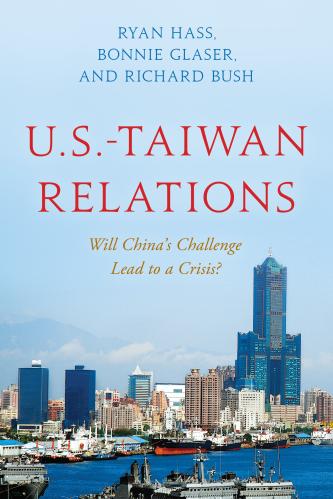

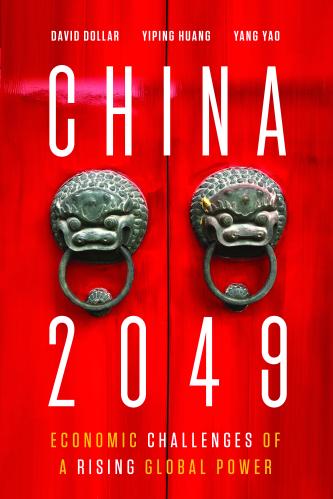
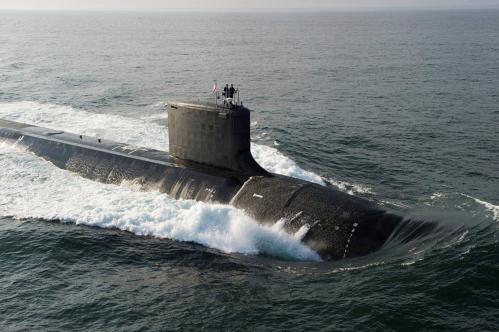
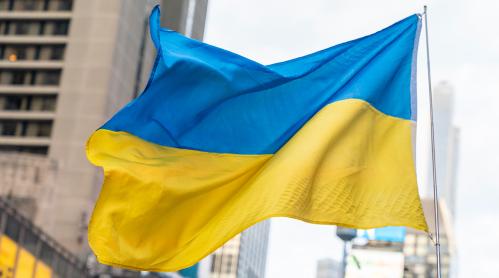
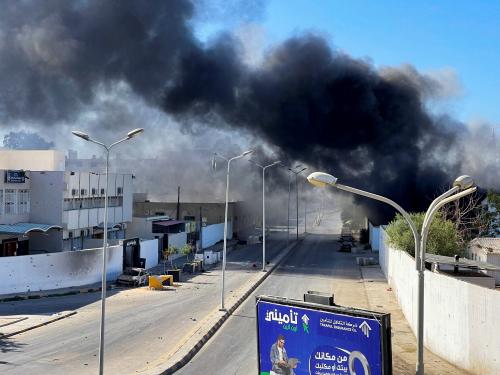




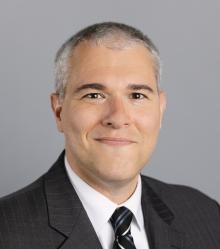


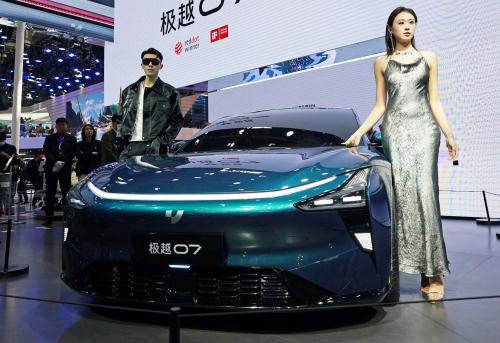
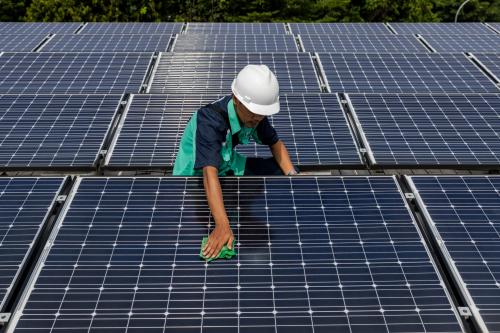
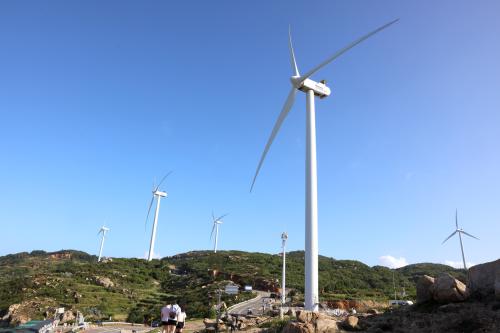
Commentary
Around the halls: Japan hosts the G-7 summit
May 19, 2023